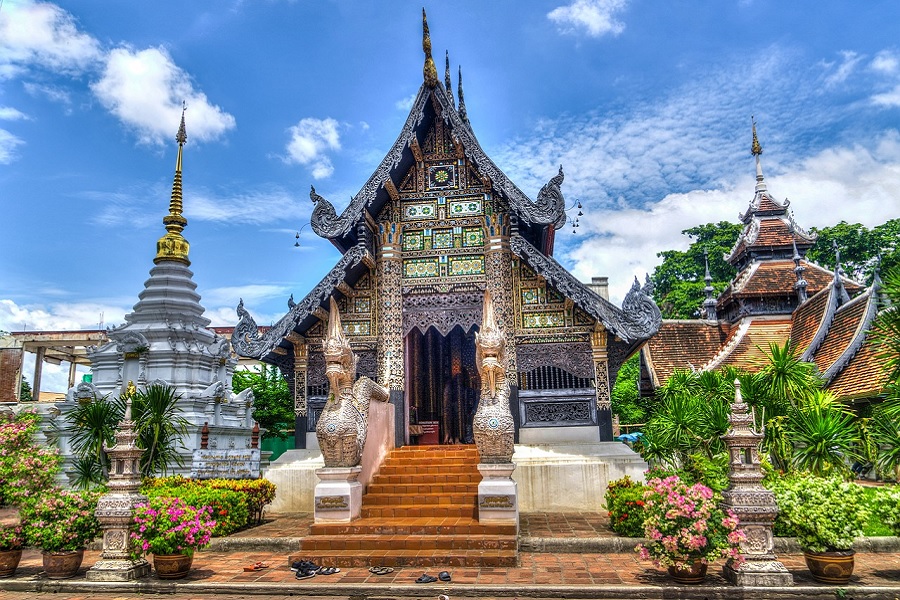
Follow us Now on Telegram ! Get daily 10 - 12 Interesting Updates. Join our Telegram Channel https://t.me/OhWomen
Download Telegram App before Joining the Channel
Temple decor is an essential element that enhances the sacred atmosphere of religious places, elevating the spiritual experience for devotees. Whether it’s Hindu, Buddhist, or other cultural temples, the decor plays a crucial role in conveying the sanctity of the space. From intricate carvings to vibrant paintings, each piece of decor in a temple tells a story and contributes to the overall spiritual energy of the space.
The Significance of Temple Decor
The primary function of temple decor is to create an environment that reflects the divine, invoking peace and tranquility. It serves to represent the connection between the earthly and the spiritual realms. The decor also helps devotees feel closer to their deity and enhances the overall spiritual experience.
The art, sculptures, and design elements used in temples have deep cultural and religious significance. They often represent mythological stories, divine figures, or historical events related to the deity the temple is dedicated to. The decor is meticulously crafted, often by skilled artisans who pass down their craft through generations.
Key Elements of Temple Decor
Murals and Paintings: Many temples, especially in India, feature stunning murals and paintings that adorn the walls. These artworks usually depict scenes from sacred texts like the Ramayana, Mahabharata, or the lives of saints. The vibrant colors and intricate details of these paintings often narrate stories that guide devotees in their spiritual journey.
Sculptures and Carvings: One of the most iconic elements of temple decor is the presence of sculptures. These include statues of gods, goddesses, and mythical creatures, carved from stone, wood, or metal. The intricate carvings on temple pillars, doors, and ceilings are often symbolic, reflecting various aspects of divinity and nature.
Temple Furniture: Temple furniture, such as the throne for the deity, decorative lamps, and altars, is often crafted with great precision. These pieces are designed to enhance the divine presence and are made using materials like wood, stone, or metals, often with embellishments in gold, silver, or copper.
Lights and Lamps: Lighting plays a crucial role in creating a peaceful ambiance. Oil lamps, brass or silver lanterns, and diya (small lamps) are traditionally used to light up the temple, especially during evening rituals. The warm glow of these lamps adds to the sacred feeling and is believed to drive away darkness, symbolizing the triumph of light over evil.
Floral Arrangements: Flowers are a common form of decor in temples, both for their aesthetic appeal and spiritual significance. They are often used to decorate altars, offer worship, and adorn statues of deities. Flowers like jasmine, marigold, and lotus are chosen for their fragrance and purity, which symbolize devotion and love for the divine.
Rugs and Carpets: In some temples, decorative rugs and carpets are laid down to offer comfort to worshippers during prayers or meditation. These rugs are often intricately woven, featuring spiritual symbols or motifs from religious texts, adding a sense of warmth and sanctity to the space.
Color Symbolism in Temple Decor
Color plays a significant role in temple decor, with each color symbolizing different aspects of divinity. For example:
Gold and Yellow: Representing prosperity, divine light, and purity.
Red: Symbolizing strength, power, and auspiciousness.
White: A symbol of peace, purity, and spirituality.
Green: Represents nature, fertility, and new beginnings.
Blue: Associated with divine wisdom and protection.
Each element is carefully chosen to reflect the values and themes that the temple seeks to communicate.
Modern Temple Decor
While traditional temple decor remains timeless, many modern temples incorporate contemporary styles while maintaining the essence of their spiritual significance. Temples today may blend traditional artwork with modern architectural designs, and some even feature advanced lighting systems and sound technologies to enhance the worship experience.
Modern temple decor also focuses on creating a serene environment for meditation and reflection. Minimalist designs, calming color palettes, and tranquil settings are incorporated to provide devotees with a peaceful space for prayer and inner peace.
Source - OhWomen